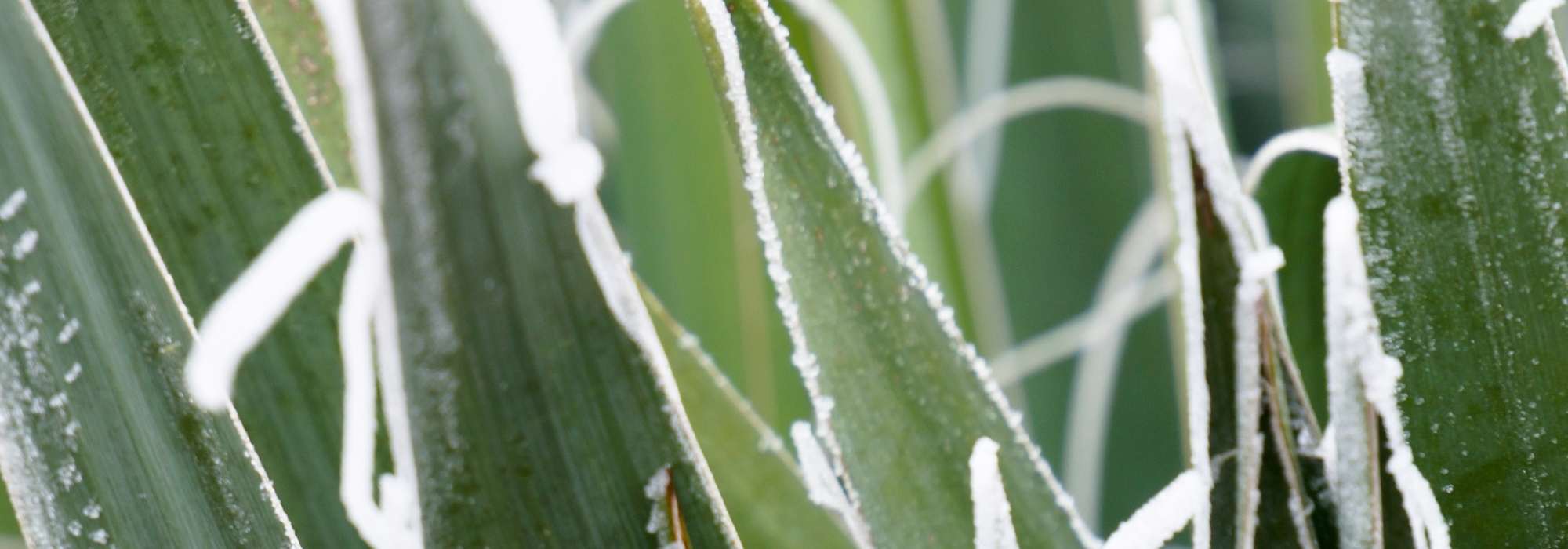
How to winter an agave?
Protect it well from the cold, whether in a pot or in the ground.
Contents
Agaves are stunning succulent plants that form rosettes of green or blue succulent leaves, equipped with sharp tips. Their flowering is rare but impressive: witnessing them bloom is a privilege that occurs only after about ten years! These beautiful creatures with a very exotic temperament, native to Mexico, are generally moderately hardy. They do not withstand temperatures below -5°C, -10°C for the hardiest, such as the large American Agaves. They thrive in heat, full sun, and dry soils, of the “cactus soil” type. They should be grown in the ground in mild climates, in gardens protected from severe frosts, and in large pots, preferably terracotta, to be stored indoors during winter in all regions.
Discover our tips for protecting your Agaves from the cold, whether you grow them in pots or in the ground!
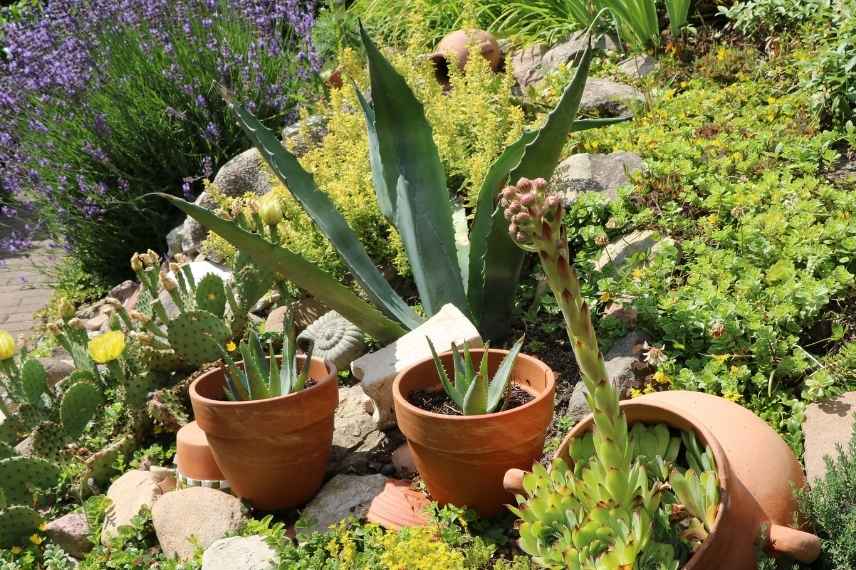
Whether grown in the ground or in pots, your agaves require protection during winter
What are the varieties of agaves involved?
Most Agaves are tender and fear winter humidity and cold: American Agaves (Agave americana), can withstand light frosts, down to about -8/10°C, while others such as Agave titanota or Agave ‘Victoriae Reginae’, to name a few, can tolerate down to -6°C in dry soil. Unless otherwise noted, outside the warmest regions of our country, proper wintering should be considered.
Agave montana, or Mountain Agave, Agave neomexicana, and Agave havardiana are the hardiest of the genus, showing resistance to severe frosts of around -20 to -23°C. These specimens are easy to grow in regions where it does not freeze harshly. In winter, in very wet areas, or if rainfall is exceptionally abundant, care should be taken to simply protect their fleshy leaves from winter rains.
→ Discover the hardiest Agaves
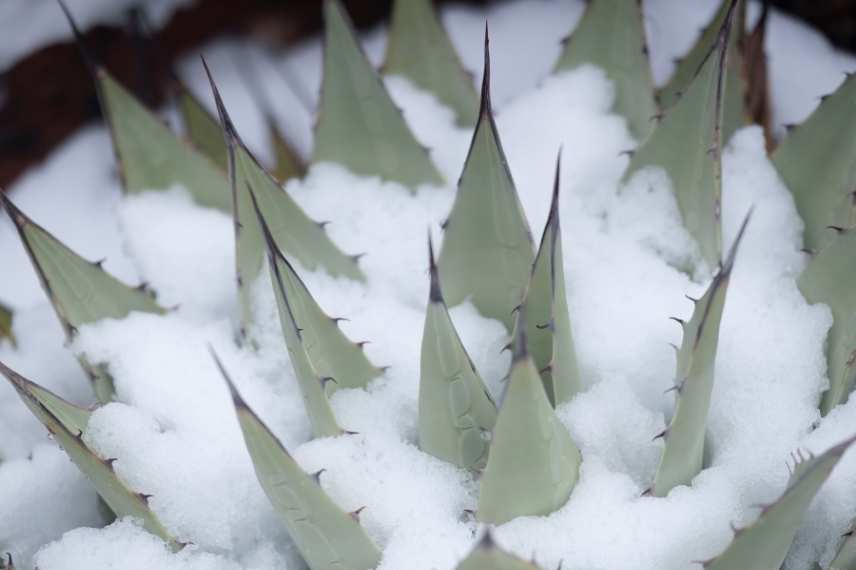
Only a few agaves tolerate cold well
Read also
Agaves: the hardiest varietiesWhen should you winter the agave?
Agave must be wintered or stored away before the first frosts, usually between mid-October and mid-November depending on the regions and until the end of March approximately. As winter approaches, it is important to protect it from frost as its succulent and evergreen leaves can be affected by the cold and icy rains. This succulent plant does not tolerate winter rains well. Waterlogged soil in winter encourages the development of fungal diseases that lead to root rot, and subsequently to the rotting of the leaves, which is why it is essential to ensure that the soil is sufficiently draining from the moment of planting.
Discover other Agave
View all →Available in 2 sizes
Available in 1 sizes
Available in 1 sizes
Available in 2 sizes
Available in 2 sizes
Available in 2 sizes
Available in 0 sizes
Available in 1 sizes
Available in 1 sizes
Available in 1 sizes
Overwintering an agave in the ground
In winter, it is essential to protect Agaves from frost for at least the first three years, as long as their size allows! These precautions are crucial, especially during the initial years following planting, as young agaves are more fragile. It’s not easy, I must admit, to approach these beautiful spiky plants with their often enormous and very sharp leaves. That’s why, before planting an agave, it’s better to choose a species suited to the climatic conditions of your region. Some agaves are as beautiful as they are cold-resistant, while others tolerate light frosts and thrive in most of our regions. Be aware that the drier and better-drained the soil, the more they will withstand frost. Ensure proper drainage at planting!
These plants fear cold combined with moisture. I advise you to protect them, as much as possible, from winter rains, especially if you are at the limit of hardiness and live in a very wet region to prevent the soil from becoming waterlogged. However, it should not be confined; avoid plastic sheeting that does not allow air circulation and promotes condensation.
- Before proceeding with winter protection, equip yourself with thick gloves and protective goggles as the tips of the spiny leaves could cause cuts and scratches.
- Start by protecting the base with a thick mineral mat (stones, gravel, slate, pumice). This insulating layer will protect the roots and soil from water, cold, and frost, helping it to survive winter well. Avoid organic mulches (such as dry leaves) that, as they decompose, may lead to stagnant moisture conducive to the development of fungal diseases.
- Cover the aerial parts by wrapping them in one or two layers of winter fleece or winter cover that is non-woven. This type of protection is permeable to water and air, allowing the plants to breathe and preventing any risk of dehydration. Ventilate as soon as temperatures warm up and when it’s not raining.
- You can also effectively protect them from rain by installing a glass door or an old window frame elevated above the plant, for which you will need four supports. This protection will prevent frost and snow from settling on the leaves.
- At the end of winter, in March or April depending on the regions, remove the winter fleece and any other protection.
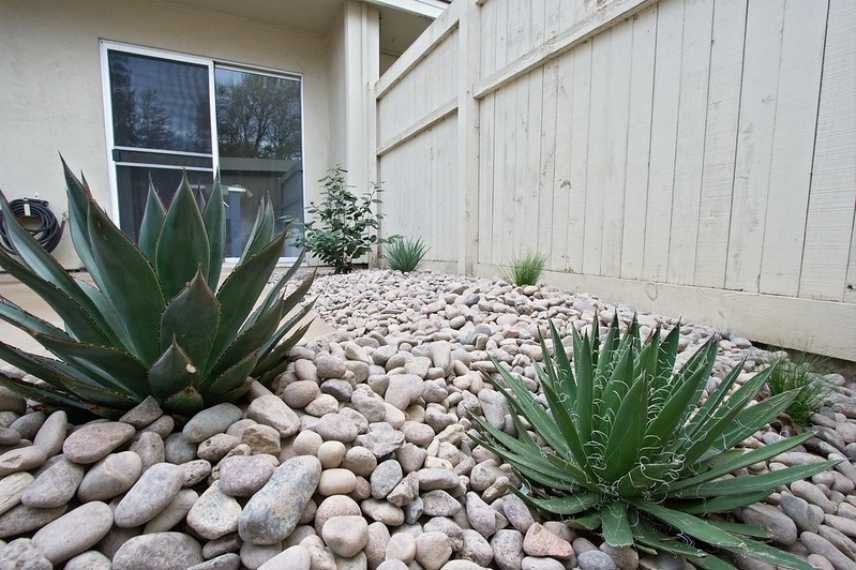
The more effective your soil has a mineral mulch, the better your agave will perform in winter (© John Loo)
Read also
Choosing an agaveWintering a potted agave
In regions with mild winters, if temperatures do not drop below -5 °C, you can leave these succulent plants in pots outside during the cold season. Generally, for agaves, the cold itself is not really a problem, down to -7 °C. They fear winter humidity more than anything else. However, even though some varieties can endure brief frosts, in pots, their roots are more vulnerable than in the ground. In the event of severe frosts forecasted:
- Spread a thick layer of gravel, slate or pumice at the base of the agave.
- Wrap your agave with a fleece. Also wrap the pot and optionally protect it with cardboard or bubble wrap. These protections will further insulate against the cold. At the end of winter, when temperatures rise, ventilate regularly by temporarily removing the fleece on sunny days. This operation helps the plant breathe properly and prevents the appearance of diseases, mould, or pests favoured in a confined environment.
If you are growing an agave in a pot outside the warmest regions of our country, it is advisable to take care of these plants by bringing the pot inside before the first frosts. Overwinter your agaves in a conservatory, greenhouse, or a bright, unheated room (between 0 and -5 °C), kept frost-free in any case.
- Drastically reduce the frequency of watering: excess moisture could cause the plant to rot. Keep the substrate dry.
- Stop fertilising until April.
You can take your pot outside in spring, as soon as there is no longer a risk of frost (that is, after the Ice Saints in regions north of the Loire). Gradually place it in the sun to prevent the leaves from burning due to sudden exposure. Ensure you water while always allowing the soil to dry between waterings. During the summer, you will provide a low-nitrogen liquid fertiliser “special for cacti” diluted in the watering water.
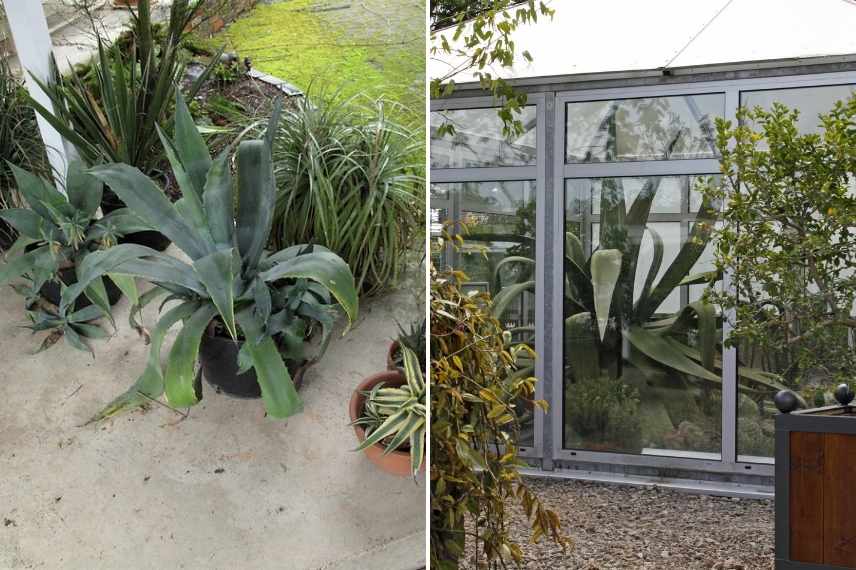
Isolating agaves under a canopy to protect them from heavy rain is ideal in mild regions. Elsewhere, a greenhouse is essential… (© Megan Hansen)
- Subscribe!
- Contents
































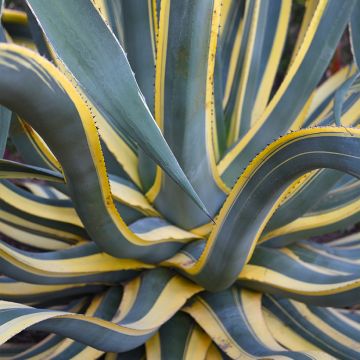
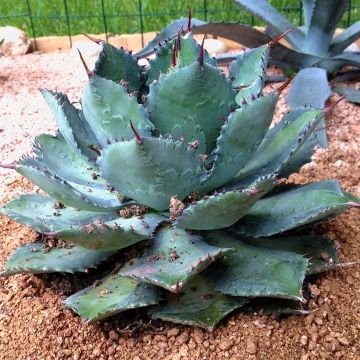
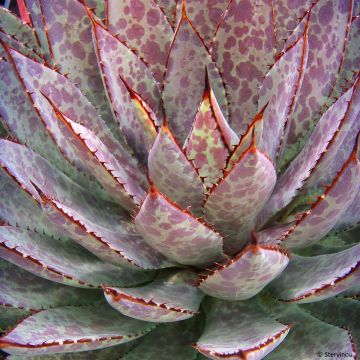
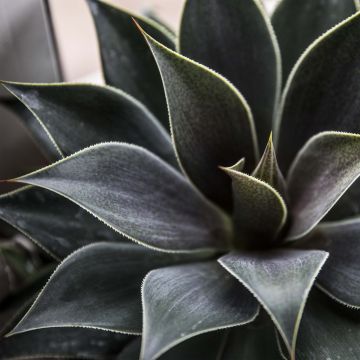
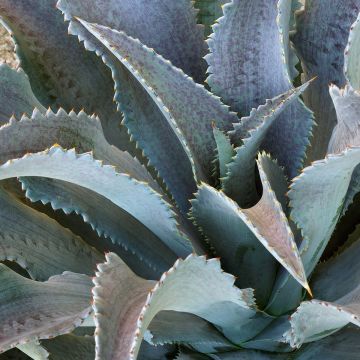
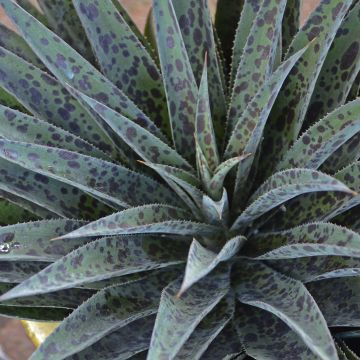
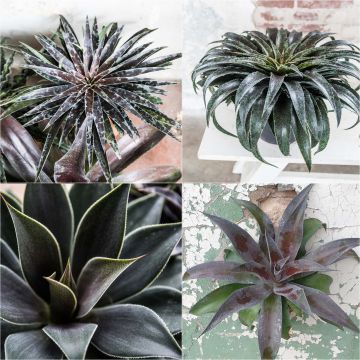
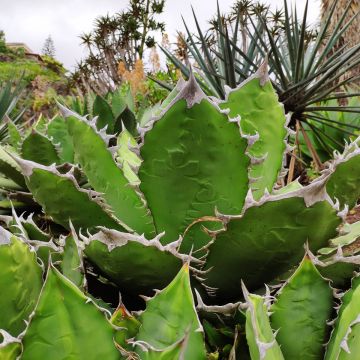
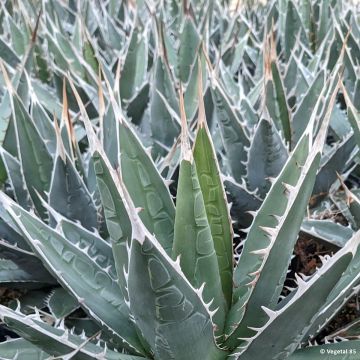
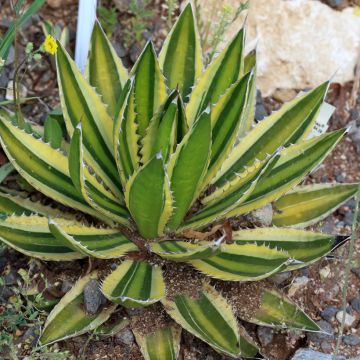
Comments